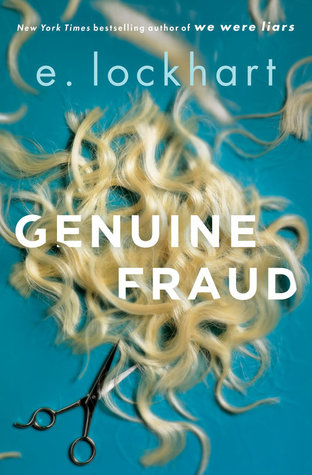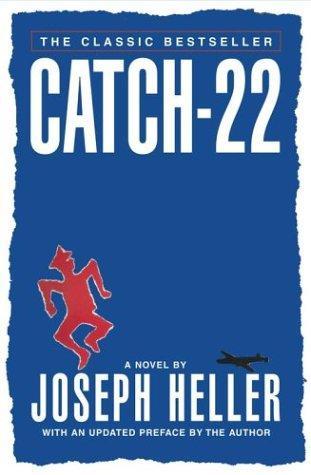Favorite picture book with a cat: Here Comes Teacher Cat. Deborah Underwood. Illustrated by Claudia Rueda. 2017. 88 pages. [Source: Library]
Favorite picture book with a cat and tea: Tea with Oliver. Mika Song. 2017. HarperCollins. 40 pages. [Source: Library]
Favorite board book: Board book: Baby Loves Quantum Physics! Ruth Spiro. Illustrated by Irene Chan. 2017. Charlesbridge. 22 pages. [Source: Review copy]
Favorite early reader: Charlie & Mouse. (Charlie & Mouse #1) Laurel Snyder. Illustrated by Emily Hughes. 2017. Chronicle Books. 48 pages. [Source: Library]
Favorite realistic fiction: Train I Ride. Paul Mosier. 2017. HarperCollins. 192 pages. [Source: Library]
Favorite speculative fiction: Orphan Island. Laurel Snyder. 2017. 288 pages. [Source: Library]
Favorite mystery: The Wife Between Us. Greer Hendricks and Sarah Pekkanen. 2018. St. Martin's Press. 352 pages. [Source: Review copy]
Board books and picture books:
- Egg. Kevin Henkes. 2017. 40 pages. [Source: Library]
- Here Comes Teacher Cat. Deborah Underwood. Illustrated by Claudia Rueda. 2017. 88 pages. [Source: Library]
- Sister Day! Lisa Mantchev. Illustrated by Sonia Sanchez. 2017. Simon & Schuster. 32 pages. [Source: Library]
- Blue Ethel. Jennifer Black Reinhardt. 2017. 40 pages. [Source: Library]
- Noisy Night. Mac Barnett. Illustrated by Brian Biggs. 2017. 32 pages. [Source: Library]
- Tea with Oliver. Mika Song. 2017. HarperCollins. 40 pages. [Source: Library]
- You Must Bring A Hat. Simon Philip. Illustrated by Kate Hindley. 2017. 40 pages. [Source: Library]
- La La La: A Story of Hope. Kate DiCamillo. Illustrated by Jaime Kim. 2017. Candlewick. 72 pages. [Source: Review copy]
- The Catawampus Cat. Jason Carter Eaton. Illustrated by Gus Gordon. 2017. 32 pages. [Source: Library]
- Fruits in Suits. Jared Chapman. 2017. Abrams. 40 pages. [Source: Review copy]
- Muddle & Mo. Nikki Slade Robinson. 2017. HMH. 32 pages. [Source: Review]
- Carrot & Pea. Morag Hood. 2017. HMH. 32 pages. [Source: Review copy]
- Chicken in School. Adam Lehrhaupt. Illustrated by Shahar Kober. 2017. 40 pages. [Source: Library]
- Chicken In Space. Adam Lehrhaupt. Illustrated by Sharhar Kober. 2016. HarperCollins. 36 pages. [Source: Library]
- Wordplay. Adam Lehrhaupt. 2017. Scholastic. 40 pages. [Source: Review copy]
- Naptastrophe. Jarret J. Krosoczka. 2017. 32 pages. [Source: Library]
- Board book: Buildablock. Christopher Franceschelli. Illustrated by Peskimo. 2017. Harry N. Abrams. 90 pages. [Source: Review copy]
- Board book: All Aboard!: Let's Ride a Train. 2017. Harry N. Abrams. 10 pages. [Source: Review copy]
- Board book: Baby Loves Quantum Physics! Ruth Spiro. Illustrated by Irene Chan. 2017. Charlesbridge. 22 pages. [Source: Review copy]
- Board book: Baby Loves Thermodynamics. Ruth Spiro. Illustrated by Irene Chan. 2017. Charlesbridge. 22 pages. [Source: Review copy]
- Board book: Charlie Builds. Bob Bianchini. 2017. Harry N. Abrams. 20 pages. [Source: Review copy]
- Board book: Changing Faces: Meet Happy Bear. Nathan Thoms. Illustrated by Carles Ballesteros. 2017. Harry N. Abrams. 18 pages. [Source: Review copy]
- Board book: Where's the Hen? Nosy Crow. Illustrated by Ingela P. Arrhenius. 2017. 10 pages. [Source: Review copy]
- Board book: Where's the Owl? Nosy Crow. Ingela P Arrhenius. 2017. Candlewick. 10 pages. [Source: Review copy]
- Board book: Better Together: A Book of Family. Barbara Joose and Anneke Lisberg. Illustrated by Jared Schorr. 2017. Harry N. Abrams. 22 pages. [Source: Review copy]
- Board book: This Little Trailblazer: A Girl Power Primer. Joan Holub. Illustrated by Daniel Roode. 2017. Simon & Schuster. 26 pages. [Source: Review copy]
- Three Little Kittens. Illustrated by Lilian Obligado. 1974. Random House. 32 pages. [Source: Bought]
- Nighty-Night, Cooper. Laura Numeroff. 2013. HMH. 32 pages. [Source: Library]
- I Want My Hat Back. Jon Klassen. 2011. Candlewick Press. 32 pages. [Source: Library]
- You Can Read. Helaine Becker. Illustrated by Mark Hoffmann. 2017. 32 pages. [Source: Library]
- Imagine. John Lennon. Illustrated by Jean Jullien. 32 pages. [Source: Review copy]
- Peck, Peck, Peck. Lucy Cousins. 2013. Candlewick Press. 32 pages. [Source: Review copy]
- The Plot Chickens. Mary Jane Auch. Illustrated by Herm Auch. 2009. Holiday House. 32 pages. [Source: Library]
- The Sock Thief. Ana Crespo. Illustrated by Nana Gonzales. 2015. 32 pages. [Source: Library]
- Cat Dreams. Ursula K. Le Guin. Illustrated by S.D. Schindler. 2009. Scholastic. 32 pages. [Source: Review copy]
- The Skunk. Mac Barnett. Illustrated by Patrick McDonnell. 2015. 40 pages. [Source: Library]
- A Fairy Friend. Sue Fliess. Illustrated by Claire Keane. 2016. 32 pages. [Source: Library]
- Make and Play: Christmas. Joey Chou, illustrator. 2017. Candlewick. 26 pages. [Source: Review copy]
- Charlie & Mouse. (Charlie & Mouse #1) Laurel Snyder. Illustrated by Emily Hughes. 2017. Chronicle Books. 48 pages. [Source: Library]
- This Little Piggy. An Owner's Manual. Cyndi Marko. 2017. 64 pages. [Source: Library]
- Wallace and Grace and the Cupcake Caper. Heather Alexander. Illustrated by Laura Zarrin. 2017. Bloomsbury. 80 pages. [Source: Library]
- Wallace and Grace Take the Case. Heather Alexander. Illustrated by Laura Zarrin. 2017. Bloomsbury. 80 pages. [Source: Library]
- The Cookie Fiasco. Dan Santat (and Mo Willems). 2016. Disney-Hyperion. 64 pages. [Source: Library]
- We Are Growing. Laurie Keller (and Mo Willems). 2016. Disney-Hyperion. 64 pages. [Source: Library]
- The Good for Nothing Button. (Elephant & Piggie Like Reading #3) Charise Mericle Harper. (Mo Willems). 2017. Disney-Hyperion. 64 pages. [Source: Review copy]
- Cats. Larry Dane Brimner. Illustrated by Tom Payne. 2001. 24 pages. [Source: Library]
- Peppa Pig Phonics Set. Adapted by Lorraine Gregory. 2017. Scholastic. [Source: Review copy]
- Genuine Fraud. E. Lockhart. 2017. 272 pages. [Source: Library]
- When My Sister Started Kissing. Helen Frost. 2017. FSG. 208 pages. [Source: Library]
- The Goat. Anne Fleming. 2017. 120 pages. [Source: Library]
- Forget Me Not. Ellie Terry. 2017. 336 pages. [Source: Library]
- Train I Ride. Paul Mosier. 2017. HarperCollins. 192 pages. [Source: Library]
- Seeking Mansfield. Kate Watson. 2017. 300 pages. [Source: Library]
- Espresso Tales (44 Scotland Street #2) Alexander McCall Smith. 2005. 345 pages. [Source: Library]
- The Wife Between Us. Greer Hendricks and Sarah Pekkanen. 2018. St. Martin's Press. 352 pages. [Source: Review copy]
- Under Their Skin. (Under Their Skin #1) Margaret Peterson Haddix. 2016. 320 pages. [Source: Library]
- In Over Their Heads. (Under Their Skin #2) Margaret Peterson Haddix. 2017. Simon & Schuster. 320 pages. [Source: Library]
- Orphan Island. Laurel Snyder. 2017. 288 pages. [Source: Library]
- Sputnik's Guide to Life on Earth. Frank Cottrell Boyce. 2017. 336 pages. [Source: Library]
- Word of Mouse. James Patterson and Chris Grabenstein. 2016 [December] Little, Brown. 304 pages. [Source: Library]
- The Wooden Prince. John Claude Bemis. 2016. Disney-Hyperion. 312 pages. [Source: Library]
- Cherished Mercy. (Heart of the Frontier #3) Tracie Peterson. 2017. Bethany House. 310 pages. [Source: Review copy]
- Beloved Hope. (Heart of the Frontier #2) Tracie Peterson. 2017. Bethany House. 338 pages. [Source: Review copy]
- Heart on the Line. (Ladies of Harper's Station #2) Karen Witemeyer. 2017. Bethany House. 329 pages. [Source: Review copy]
- Verdict of Twelve. Raymond Postgate. 1940/2017. 208 pages. [Source: Review copy]
- The Circular Staircase. Mary Roberts Rinehart. 1908. 197 pages. [Source: Bought]
- The Case of the Fiery Fingers. Erle Stanley Gardner. 1951. 192 pages. [Source: Bought]
- The Case of the Lucky Loser. Erle Stanley Gardner. 1957. 192 pages. [Source: Bought]
- Death of a Cad. M.C. Beaton. 1987. 214 pages. [Source: Library]
- Heirloom Murders. (Chloe Ellefson Mystery #2) Kathleen Ernst. 2011. 349 pages. [Source: Library]
- Light Keeper's Legacy. (Chloe Ellefson Mystery #3) Kathleen Ernst. 2012. 360 pages. [Source: Library]
- The Case of the Gilded Lily. (Perry Mason #50) Erle Stanley Gardner. 1956. 188 pages. [Source: Bought]
- The Case of the Daring Decoy. (Perry Mason #54) Erle Stanley Gardner. 1957. 198 pages. [Source: Bought]
- The Wife Between Us. Greer Hendricks and Sarah Pekkanen. 2018. St. Martin's Press. 352 pages. [Source: Review copy]
- The Wretched. Victor Hugo. Translated by Christine Donougher. 1862/2013. 1456 pages. [Source: Bought]
- Verdict of Twelve. Raymond Postgate. 1940/2017. 208 pages. [Source: Review copy]
- Catch-22. Joseph Heller. 1961. 453 pages. [Source: Library]
- The Circular Staircase. Mary Roberts Rinehart. 1908. 197 pages. [Source: Bought]
- The Case of the Fiery Fingers. Erle Stanley Gardner. 1951. 192 pages. [Source: Bought]
- The Case of the Lucky Loser. Erle Stanley Gardner. 1957. 192 pages. [Source: Bought]
- The Case of the Gilded Lily. (Perry Mason #50) Erle Stanley Gardner. 1956. 188 pages. [Source: Bought]
- The Case of the Daring Decoy. (Perry Mason #54) Erle Stanley Gardner. 1957. 198 pages. [Source: Bought]
- Impressionism. Florian Heine. 2015. 48 pages. [Source: Library]
- The Marvelous Thing That Came From a Spring. Gilbert Ford. 2016. 40 pages. [Source: Library]
- Simone Biles. Matt Scheff. 2016. [Dec. 2016] Sportzone. 32 pages. [Source: Library]
- The Great American Story of Charlie Brown, Snoopy, and the Peanuts Gang. Chloe Perkins. Illustrated by Scott Burroughs. 2017. 48 pages. [Source: Library]
- An English Year: Twelve Months in the Life of England's Kids. 2015. 32 pages. [Source: Library]
- This Is How We Do It. Matt LaMothe. 2017. Chronicle. 52 pages. [Source: Library]
- Blood, Bullets, and Bones. The Story of Forensic Science from Sherlock Holmes to DNA. Bridget Heos. 2016. 263 pages. [Source: Library]
Christian fiction:
- Cherished Mercy. (Heart of the Frontier #3) Tracie Peterson. 2017. Bethany House. 310 pages. [Source: Review copy]
- Beloved Hope. (Heart of the Frontier #2) Tracie Peterson. 2017. Bethany House. 338 pages. [Source: Review copy]
- Heart on the Line. (Ladies of Harper's Station #2) Karen Witemeyer. 2017. Bethany House. 329 pages. [Source: Review copy]
- Sing!: How Worship Transforms Your Life, Family, and Church. Keith and Kristyn Getty. 2017. B&H Books. 176 pages. [Source: Review copy]
- Living Life Backward: How Ecclesiastes Teaches Us To Live in Light of the End. David Gibson. 2017. Crossway. 176 pages. [Source: Review copy]
- Mark: The Gospel of Passion. Michael Card. 2012. IVP. 206 pages. [Source: Library]
- Learning to Love the Psalms. W. Robert Godfrey. 2017. Reformation Trust. 318 pages. [Source: Review copy]
- Martin Luther: A Spiritual Biography. Herman Selderhuis. 2017. Crossway. 288 pages. [Source: Review copy]
- The Messiah Comes to Middle Earth. Philip Ryken. 2017. Intervarsity Press. 150 pages. [Source: Review copy]
- Godspeed: Voices of the Reformation. David Teems. 2017. Abingdon Press. 384 pages. [Source: Review copy]
- The Living Bible. 1974. Tyndale. 1090 pages. [Source: Bought]
- ESV Reformation Study Bible. 2015. Edited by R.C. Sproul. Reformation Trust. 2560 pages. [Source: Gift/Bought]
- Saints of Zion. Jeff Lippencott & R.C. Sproul. 2017. Ligonier. 67 minutes. [Source: Gift]
© 2017 Becky Laney of Becky's Book Reviews





























